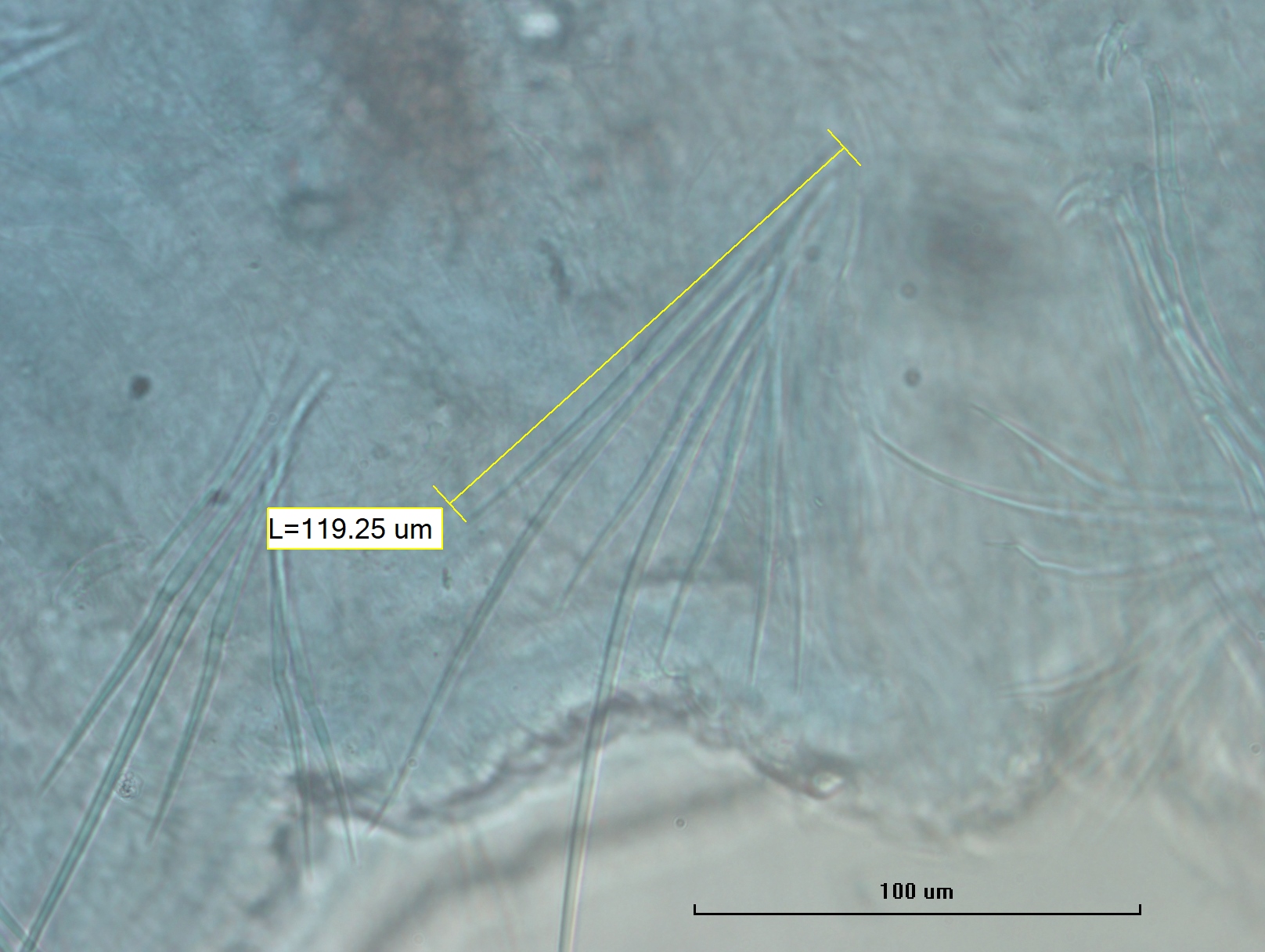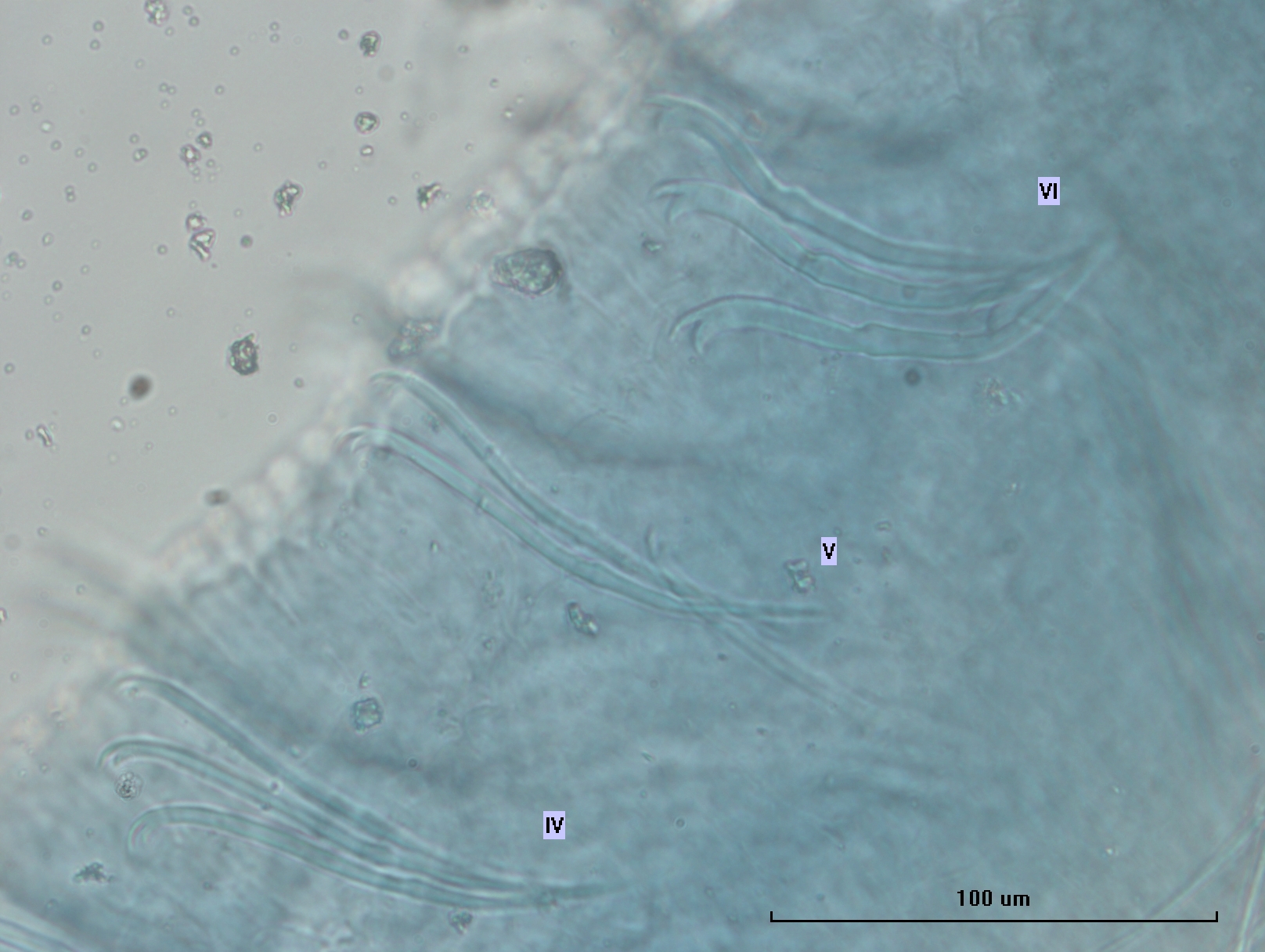
Nais barbata Müller, 1773 is a freshwater oligochaete worm that is an uncommon oligochaete in the Great Lakes. It is a naidid worm with dorsal bundles beginning in VI and ventral bundles beginning in II, hair chaetae in the dorsal bundles, and without a proboscis. Worms in the genus Nais usually have 1–2 hair and needle chaetae in each dorsal bundle with simple-pointed or bifid needles, but this species is the only one with up to 5 hairs and 5 needles. In Nais, the ventrals usually change between V and VI, often quite dramatically. For Nais barbata, anterior ventral chaetae of II–V are longer, thinner, and straighter than posteriorly with an upper tooth that is twice as long as the lower, while the posterior ventral chaetae have upper teeth that are equally long. The needle chaetae are simple-pointed with long attenuated tips, with the nodulus 1/2 distance from the distal end, measuring about 90 µm long.
N. barbata has dorsal bundles with up to 5 hair chaetae and up to 5 simple-pointed needles with long tips, about 90 µm or longer. Anterior ventral bundles of II–V have long, thin, straight chaetae with upper teeth that are longer and thinner than the lower tooth. Starting in VI, there are stouter chaetae with the upper tooth as long as the lower tooth.
N. barbata can be found in the Great Lakes, Wisconsin, Ontario, St. Lawrence River, the Mississippi and Illinois Rivers, Louisiana, and Maine.
Lakes Erie, Huron, Michigan, and Ontario.
N. barbata, unlike many of the other Nais species found in the Great Lakes, has simple-pointed needles. It’s most likely to be confused with Nais simplex or Nais alpina, which also have simple-pointed needles, looking like an extra hairy version of N. simplex at first. The main difference between N. barbata and N. simplex is the size and shape of the needles. N. barbata has long, thin needles with the nodulus halfway toward the distal end, usually around 90 µm or longer. N. simplex has shorter, broad-tipped needles with the nodulus 1/3 toward the distal end, usually around 60 µm. N. alpina is similar to N. simplex but the nodulus is even closer to the distal end, and the posterior ventral chaetae have the upper tooth longer than the lower tooth and not equal like in N. simplex.
N. barbata is more closely confused with N. pseudobtusa, which also has more than 2 long, thin needles and hairs, although it hasn’t been found in our samples before. N. pseudobtusa has 1–3 hairs and needles, and the needles are about 90 µm but attenuated so they may be much thinner and almost hair-like at the end. N. pseudobtusa also differs in the ventral chaetae, which have the upper tooth longer and thinner both anteriorly and posteriorly, compared to N. barbata which has equal teeth posteriorly.
N. barbata is a small freshwater oligochaete.
No, this species does not yet have a barcode reference from the Great Lakes.

Figure 1. A dorsal bundle with at least 2 hairs and 5 needle chaetae, measuring more than 90um.

Figure 2. The ventral chaetae change shape at VI from thin with a long, thin upper tooth, to thicker with a short, thin upper tooth that is equal to the lower tooth.
Kathman, R.D., and R.O. Brinkhurst. 1998. Guide to Freshwater Oligochaetes of North America. pp. 83–84, 40, 80–89.
Hiltunen, J.K., and D.J. Klemm. 1980. A Guide to the Naididae (Annelida: Clitellata: Oligochaeta) of North America. pp. 25–26, 35.
Some content on this page is saved in PDF format. To view these files, download Adobe Acrobat Reader free. If you are having trouble reading a document, request an accessible copy of the PDF or Word Document.
